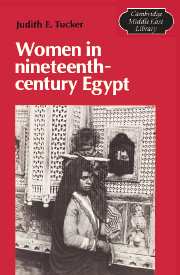Book contents
- Frontmatter
- Contents
- List of illustrations
- Acknowledgments
- List of abbreviations
- Note on transliteration and dates
- Introduction
- 1 Ploughs and shares: women, agricultural production, and property
- 2 Spindles and songs: women in urban occupations
- 3 Private and public life: women and the growth of the State
- 4 Women, resistance, and repression
- 5 The practice of slavery: women as property
- Conclusion
- Appendix: The court records, overview and sample
- Notes
- Glossary
- Bibliography
- Index
5 - The practice of slavery: women as property
Published online by Cambridge University Press: 28 October 2009
- Frontmatter
- Contents
- List of illustrations
- Acknowledgments
- List of abbreviations
- Note on transliteration and dates
- Introduction
- 1 Ploughs and shares: women, agricultural production, and property
- 2 Spindles and songs: women in urban occupations
- 3 Private and public life: women and the growth of the State
- 4 Women, resistance, and repression
- 5 The practice of slavery: women as property
- Conclusion
- Appendix: The court records, overview and sample
- Notes
- Glossary
- Bibliography
- Index
Summary
The lady's secrets are in the vault, but those of the slave woman are in the marketplace.
Egyptian proverb (Taymūr, 1008, p. 173)The daughter of a great family is precious even if she be a slave.
Egyptian proverb (Taymūr, 828, p. 140)Slavery has never been a uniform, absolute condition of bondage defying historical variation. The North American experience of that peculiar institution, marked by racial prejudice and a lifetime of unremitting hard labor for the majority of the enslaved, has fostered a vision of slavery which often serves as the point of comparison for other forms of unfree servitude. The plight of slaves in Egypt has been described, for example, as “much better than that of American slaves.” Apologists for Egyptian slavery pointed to the greater comfort of the slave, less subject as he or she was to the lash and hard labor; critics of the institution were more prone to see slavery as a monolithic system and Egyptian slaves as little different from their counterparts engaged in slave labor on the plantations of the American South. In both cases, however, the institution of slavery as well as the status of the slaves were assumed to partake of a unitary juridical and social definition, subject only to variation in degree, not in kind.
The dangers of such an approach, which ignores the differences in legal and social status and variations in social and economic roles among slaves in the many societies where some form of unfree servitude has been practiced, have been aptly discussed in the context of slavery in ancient Greece.
- Type
- Chapter
- Information
- Women in Nineteenth-Century Egypt , pp. 164 - 193Publisher: Cambridge University PressPrint publication year: 1985



